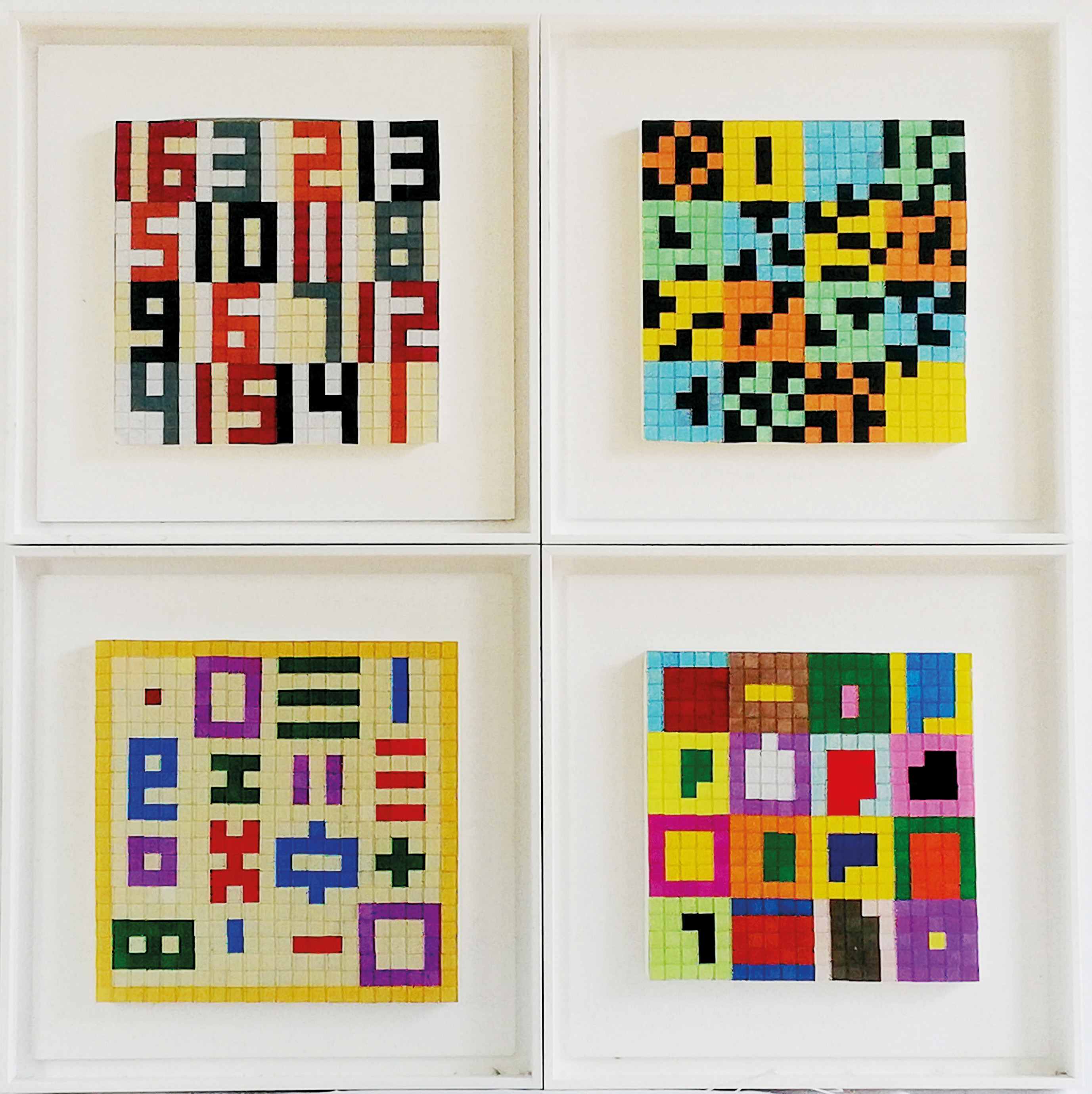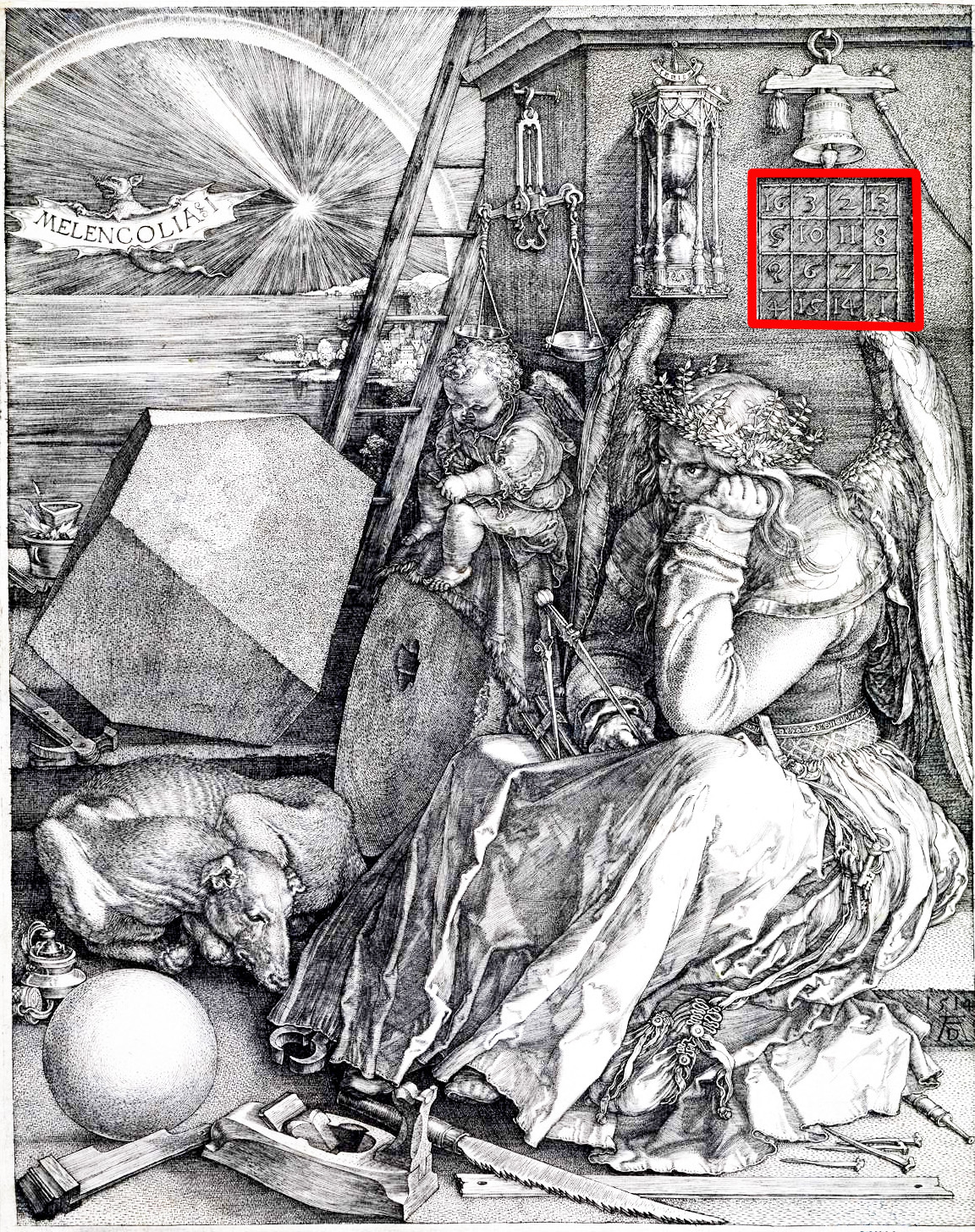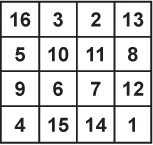| Stomachion | |||||
 |
The Magic Square A magic square consists of n x n squares in which different whole numbers are placed and arranged so that the sum of the rows, columns, and diagonals is equal in each case.
For a magic 3 x 3 square with the numbers 1 to 9, there is exactly one solution; for magic 4 x 4 squares with the numbers 1 to 16, there are 880 solutions; and for magic 5 x 5 squares with the numbers 1 to 25, there are already 275,305,224 solutions. Magic squares with 3 x 3 fields have been revered by many ancient cultures, from the Maya in Central America to the Hausa in Africa. The oldest mention of a magic square is found in China during the time of Emperor Yu around 2200 BCE.
The square depicted here, with 4 x 4 fields, comes from Albrecht Dürer (1471-1528) and is depicted in his masterful engraving "Melencolia I" (see link). The sum of its rows, columns, and diagonals, also referred to as magic, is 34 each. Excluding the eight possible symmetric positions generated by reflection and rotation, there are 880 different magic 4 x 4 squares with the numbers 1 to 16. However, the Dürer square has some special properties. The sum of the four central squares as well as the four corner square pairs also equals 34. Similarly, the sum of the four corner squares (16 + 13 + 1 + 4) and the four squares offset clockwise (e.g., 3 + 8 + 14 + 9 and 2 + 12 + 15 + 5) also equals 34. Additionally, the numbers in the two middle rows or columns in a zigzag sequence (such as 3 + 11 + 6 + 14) also add up to 34. The square also contains a special feature: the year 1514 is inscribed in the middle of the last row, the year in which Dürer created the engraving. At the beginning of the last row, there is a 4, and at the end, a 1. The fourth letter of the alphabet is a D and the first is an A, forming the artist's monogram (Dürer Albrecht).
|
Dürers magic square in four different representations. (Acrylic mosaic tiles on kappa lightweight board, each 30 x 30 cm). |
|
 |

